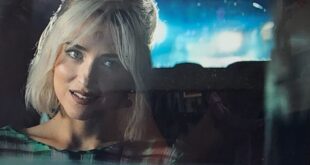Living our lives of ease and luxury in the cities of the world it's easy to forget that there are places on the planet where life is hard and unforgiving. Where a simple error in judgment can easily lead to dangerous accidents or even loss of life. We see photographs of the high Arctic or the Sahara Desert and we wonder at their harsh beauty. Seemingly lifeless, they both offer vista's of what seems like unchanging landscape for miles in every direction. Yet appearances are deceptive as each of them are home to not only a variety of plants and animals, but people as well.
Traditionally the people of both lands were nomadic, but gradually the lands they once utilized to hunt or graze their flocks have been taken away from them. Whether it's permanent cities and their auras of waste that spread for miles in every direction, men trying to harvest the gifts that lay just below the earth's crust, or borders between countries, the wanderers of this world are no longer as free to travel as they once were. However while some have elected to settle among the cities of this new world, others have found ways to adapt to the changes and maintain the life of their ancestors.
Documentary film maker Hisham Mayet spent the better part of two years travelling through the Sahara desert filming and recording the people and the musicians he met there. One of the results of that trip is a new documentary DVD, Palace Of The Winds, being released on May 12th by Sublime Frequencies. However, don't expect your normal documentary movie with voice overs and talking heads leading you by the hand to tell you a story because that's not Mayet's way. His camera and sound equipment give you eyes and ears to see and hear the world he is travelling through but he leaves you to form your own impressions based on the information you're able to absorb.
Throughout the length of the roughly 55-minute film Mayet cuts between footage he shot while travelling between Guelmim in Southern Morocco and Nouakchott in Mauritian and footage of five groups of musicians he met along the way. With the music playing in the background as we travel through cities, nomad camps, and desert landscapes, we gradually begin to understand the context within which it was created. From the Atlantic coast in Morocco where the tidal flats appear to butt up against the beginnings of the Sahara, the sands and hills shaped by the wind that are the desert, a collection of felt and hide tents seemingly in the middle of nowhere that makes up an encampment, the back streets of a city lined with sun-baked clay buildings crumbling onto the sidewalk, to wide avenues cutting through a modern city; all are part of the world these people move through.
At times, watching this movie, you occasionally lose track of the fact that you're in the twenty-first century, while at other moments you are confronted with a visual that emphasises the dichotomy of the nomads' world and the world they are travelling through. One of the most powerful images in the film is the camera pulling back from a large felt-and-hide tent only to see that it has been set up in the middle of a town square and that is surrounded on all sides by buildings and shops. Inside the tent, a group of women, swathed from head to toe in cloth, some with their faces partially shielded, are either conducting some sort of divination ritual using sticks, or playing some sort of elaborate game. We have no way of knowing which, as neither their demeanour or behaviour give us any indication as to the nature of what they are doing.
On another occasion the camera brings us inside and we are surrounded by woman, who are again covered head to toe with cloth, but this is obviously some sort of celebration as they are decked in all the colours of the rainbow. Bright yellows, greens, oranges, reds, purples and blues flash and glitter until you begin to feel like you've wandered into the nesting grounds of exotic tropical birds who've decided to compete to see who can grow the flashiest feathers. Initially the camera stays tightly focused on small groups of women and you just assume the music playing is simply the soundtrack like on other occasions. However when the camera finally pulls back to reveal the scene we see the band is playing live and that the only men in the room are two of the musicians and the waiters serving the women. Some of the women get up to dance and they are completely covered, faces and all, in their bright colours so that it looks like a rainbow has been called into life by the pulsating rhythm of the music.
While it might sound frustrating that Mayet never offers any clues as to what you're observing – what exactly were all those women doing together in their bright clothes being waited on by men? However, if you look at Palace Of The Wind in the same way you would a collage, a series of images placed together seemingly at random in order to create an overall impression, and don't worry about the meaning of each chapter in the movie, you will see that he has done an amazing job of depicting life among the nomads of this region.
Of course, tying everything together is the music that plays continuously throughout the movie. Nearly half of the footage in the movie is of the musicians performing. Now we're not talking about them playing concerts, except for that one occasion described above, as for the most part they've been filmed in what looks to be rooms in their houses. Like other bands from the region the music is dominated by electric guitar and characterized by the hypnotic, trance like quality of its sound. Although, as we move from region to region a new band takes over, the music doesn't undergo any real noticeable changes. No matter if we are in a major metropolitan centre surrounded by cars and buildings or in the middle of the desert at a Nomad camp, the music is the thread that ties us to the people and that connects all the various scenes. They are the music and the music is them, and its what distinguishes them from the world around them.
Palace Of The Wind is not your usual type of documentary movie as it contains none of the narration or interviews that you're used to seeing. What it does do is give you an unprecedented look into the lives of the nomadic people of the Saharan desert, and the interrelationship between the people's lives and their music. It's an amazing voyage of discovery and exploration from which you're sure to retain vivid memories that will stick with you forever. You may never travel so far without leaving your house again
 Blogcritics The critical lens on today's culture & entertainment
Blogcritics The critical lens on today's culture & entertainment



